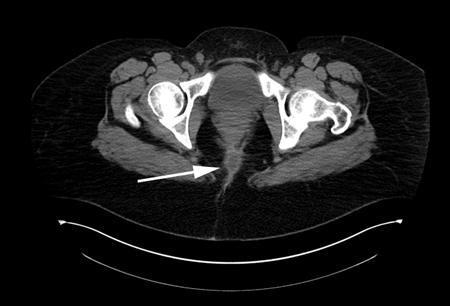Etiology
The majority of anorectal abscesses result from infections of the anal glands (cryptoglandular infections).[12] The anal canal has 6 to 14 glands that lie in the plane between the internal and external anal sphincters. Ducts from these glands pass through the internal sphincters and drain into the anal crypts at the dentate line. These glands may become infected when a crypt is occluded by impaction of food matter, by edema from trauma secondary to a hard stool or foreign body, or as a result of an adjacent inflammatory process such as Crohn disease.
Pathophysiology
If a crypt does not spontaneously drain into the anal canal, an infection of the intersphincteric space may occur. This infection may spread along the intersphincteric space and result in an intersphincteric, perianal, or supralevator abscess. The infection may also pass through the external anal sphincter and result in a perirectal abscess.[2][7]
Anorectal abscesses are associated with anal fistulas in 30% to 70% of patients.[4] If these fistulas are not recognized and treated, perirectal abscesses may recur. Perirectal abscesses are also a common manifestation of Crohn disease and this diagnosis must be considered in patients with recurrent anorectal abscesses.[1]
Classification
Clinical anatomic classification[7]
Anorectal abscesses are usually classified clinically, based on the anatomy of the abscess.
Intersphincteric abscesses are located in the space between the internal and external anal sphincter.
Perianal abscesses occur in the superficial soft tissues overlying the intersphincteric space.
Perirectal abscesses are found in the ischiorectal or postanal spaces.
Supralevator abscesses occur above the anorectal ring in the supralevator space.
[Figure caption and citation for the preceding image starts]: CT demonstrating a perirectal abscessFrom the collection of Dr C. Neal Ellis; used with permission [Citation ends].

Use of this content is subject to our disclaimer